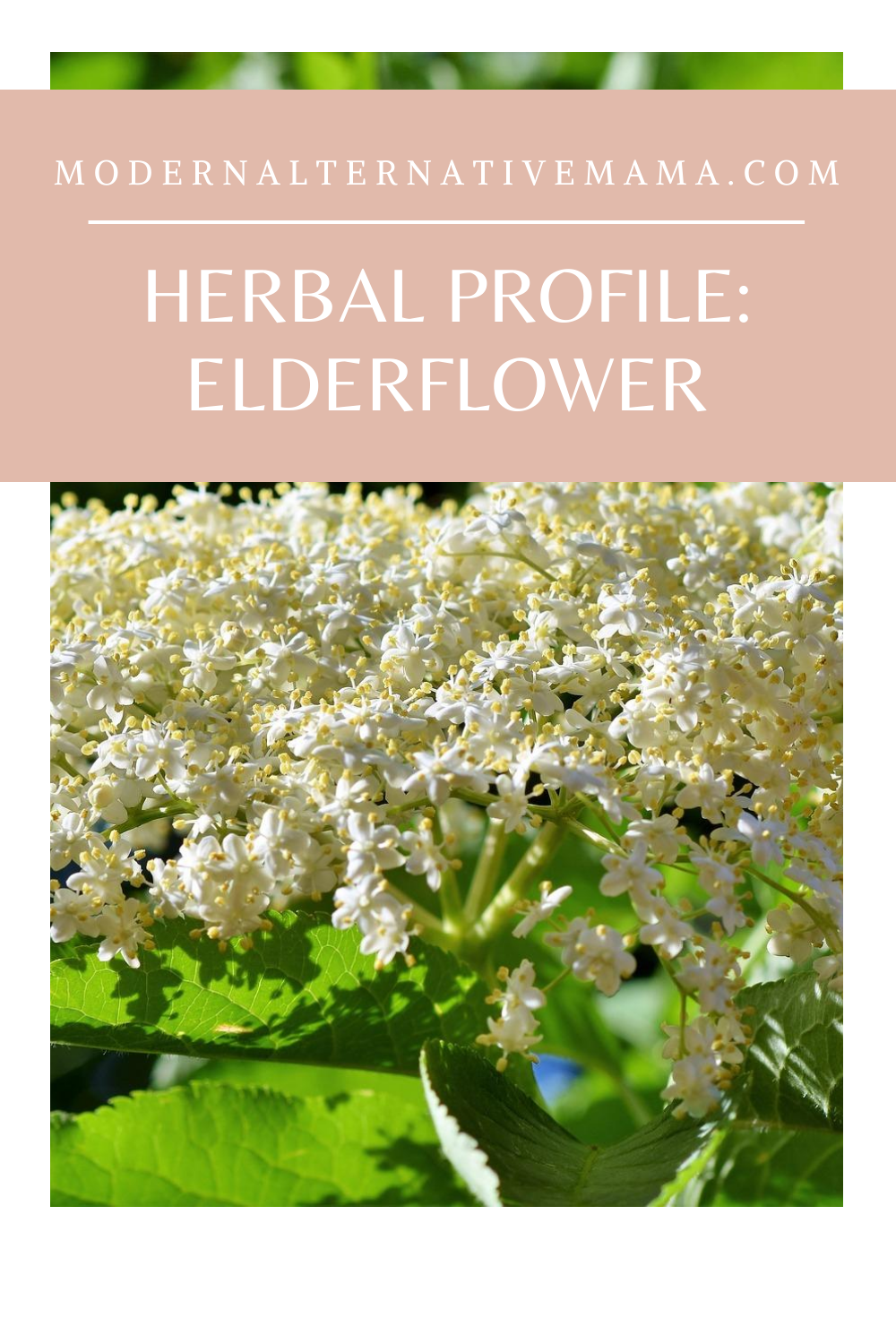By Danielle, contributing writer
Elderberries, from the plant elder, have become extremely popular in natural circles in recent years. But, did you know that elderflowers are just as potent and healing, too?
It’s true. They have a gentle, berry-flower flavor that lends its own healing benefits. It’s easily found in North America along ditches, hedges, river or creek banks, nestled amongst unsuspecting fences and corners.
Elderflower History
Sambucus, its scientific name, has a number of subspecies, but when we consider it a medicinal, we are normally referring to Sambucus nigra. Loved as a tea flavoring, it’s been traditionally used for centuries by native peoples for colds, flu, or any chest or inflammation complaint.
Elder is believed to provide so many of its benefits through its antioxidant bioflavonoids, including quercetin, isoquercitrin, and anthocyanins. Its anti-cancer properties are thanks to triterpenoids, while its chlorogenic acids help with blood sugar levels, allergies, and provide its laxative effect.
Top 9 Uses for Elderflower
Most supplement with elder for an immune boost, but it also can be used to remedy a whole host of concerns, including:
- Antiseptic and anti-inflammatory mouthwash
- Stops excessive bleeding
- May ease joint pain and swelling
- Boost the immune system
- Treat seasonal allergies
- Diuretic
- Cancer prevention
- Laxative
- Anti-bacterial, including killing MRSA
Contraindications
The berries can be toxic in large amounts as they contain cyanide when not cooked. Be sure to fully cook or boil berries before use. Flowers do not need to be cooked, but no other part of the plant (stems, twigs, roots) should be consumed. If you experience nausea or vomiting when using elderflower, take a break from its use.
Sourcing & Wildcrafting
You can buy elderflower dried and bulk, in capsules, or in a tincture. What type of supplement you choose depends on what you know you are comfortable with. Be sure to look for a product that’s organic, is reputable, and has no fillers.
If you choose to look for your own elderflowers, know that there are some look-a-likes, such as pokeweed, which is poisonous. Go with a guide, and know your area. (Tip: pokeweed has a green-dark purple stem, which elder is woody.) Always avoid the roadways and areas that may be sprayed, such as forest preserves. Harvest responsibly, not taking more than 20% of the plant.
Elderflower Tea
Use this recipe to make a simple elderflower tea.
Boil enough water to fill your favorite mug, and pour over 1 heaping teaspoon of elderflower tea in your favorite tea mesh bag or spoon. Allow to steep 10 minutes, and remove the herb. Enjoy with a splash of lemon or teaspoon of raw, local honey.
Click here for more ideas on how to use your elderflower.
Elderberries may get all the limelight, but elderflowers are just as beneficial and tasty! Add them as a tasty tea to your health regimen for the fall and winter.

